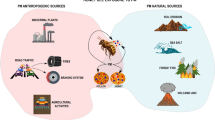Summary
The flow of jelly from 100 nurse bees to the members of two normal-sized colonies was measured during one night. To follow the flow, nurses were injected with 14C-phenylalanine. They incorporated this label into the protein of their hypopharyngeal (brood food) glands and their own body protein. When they were allowed trophallactic contacts during the investigation period a loss of label and a shift away from the abdomen was observed, indicating protein synthesis in the hypopharyngeal glands from previously stored protein. Very young larvae were fed less frequently than older ones. Younger workers received larger amounts of jelly than older ones, but considerable amounts were given to foragers. Drones behaved similarly. Between one-third and one-half of the distributed jelly was given to imagines; 10% and 16% of all workers received radioactive jelly from 100 nurses in the two colonies during one night. Thus, jelly is a very important food for adult honey bees. There was a remarkable exchange of label within the class of nurses themselves that is interpreted as communication within the social system.
Similar content being viewed by others
Abbreviations
- dpm:
-
decays per minute
References
Brouwers EVM (1982) Measurement of hypopharyngeal gland activity in the honeybee. J Apic Res 21:193–198
Calderone NW, Page RE Jr (1991) Evolutionary genetics of division of labor in colonies of the honey bee (Apis mellifera). Am Nat 138:69–92
Crailsheim K (1985) Distribution of haemolymph in the honeybee (Apis mellifera) in relation to season, age and temperature. J Insect Physiol 31:707–713
Crailsheim K (1986) Dependence of protein metabolism on age and season in the honeybee (Apis mellifera carnica Pollm). J Insect Physiol 32:629–634
Crailsheim K (1990a) Protein synthesis in the honeybee (Apis mellifera L.) and trophallactic distribution of jelly among imagos in laboratory experiments. Zool Jb Physiol 94:303–312
Crailsheim K (1990b) The protein balance of the honey bee worker. Apidologie 21:417–429
Crailsheim K (1991) Interadult feeding of jelly in honeybee (Apis mellifera L.) colonies. J Comp Physiol B 161:55–60
Crailsheim K, Stolberg E (1989) Influence of diet, age and colony condition upon intestinal proteolytic activity and size of the hypopharyngeal glands in the honeybee (Apis mellifera L.). J Insect Physiol 35:595–602
Crailsheim K, Schneider LHW, Hrassnigg N, Bühlmann G, Brosch U, Gmeinbauer R, Schöffmann B (1992) Pollen consumption and utilization in worker honeybees (Apis mellifera carnica): dependence on individual age and function. J Insect Physiol 38:409–419
Free JB (1957a) The food of adult drone honeybees (Apis mellifera). Brit J Anim Behav 5:7–11
Free JB (1957b) The transmission of food between worker honeybees. Brit J Anim Behav 5:41–47
Free JB (1960) The distribution of bees in a honey-bee (Apis mellifera L.) colony. Proc R Ent Soc London 35A:141–144
Frisch K von (1965) Tanzsprache und Orientierung der Bienen. Springer, Berlin Heidelberg New York
Furgala B, Boch R (1961) Distribution of honeybees on brood. Bee World 42:200–202
Grogan DE, Hunt JH (1980) Age correlated changes in midgut protease activity of the honeybee, Apis mellifera (Hymenoptera: Apidae). Experientia 36:1347–1348
Grogan DE, Hunt JH (1984) Chymotrypsin-like activity in the honeybee Apis mellifera patterns in a 3-year study. J Apic Res 23:61–63
Groot, De AP (1953) Protein and amino acid requirements of the honeybee (Apis mellifera L.). Physiol Comp Oecol 3:197–285
Haydak MH (1934) Changes in total nitrogen content during the life of the imago of the worker honeybee. J Agric Res 49:21–28
Huang Z-Y, Otis GW (1989) Factors determining hypopharyngeal gland activity of worker honey bees (Apis mellifera L.). Insect Soc 36:264–276
Huang Z-Y, Otis GW, Teal PEA (1989) Nature of brood signal activating the protein synthesis of hypopharyngeal gland in honey bees, Apis mellifera (Apidae: Hymenoptera). Apidologie 20:455–464
Jimenez DR, Gilliam M (1989) Age-related changes in midgut ultrastructure and trypsin activity in the honey bee, Apis mellifera. Apidologie 20:287–303
Knecht D, Kaatz HH (1990) Patterns of larval food production by hypopharyngeal glands in adult worker honey bees. Apidologie 21:457–468
Kunert K, Crailsheim K (1988) Seasonal changes in carbohydrate, lipid and protein content in emerging worker honeybees and their mortality. J Apic Res 27:13–21
Lindauer M (1952) Ein Beitrag zur Frage der Arbeitsteilung im Bienenstaat. Z Vergl Physiol 34:299–345
Mindt B (1962) Untersuchungen über das Leben der Drohnen, insbesondere Ernährung und Geschlechtsreife. Z Bienenforsch 6:9–33
Mortiz B, Crailsheim K (1987) Physiology of protein digestion in the midgut of the honeybee (Apis mellifera L.). J Insect Physiol 33:923–931
Nixon HL, Ribbands CR (1952) Food transmission within the honeybee community. Proc Roy Soc London, Ser B 140:43–50
Puchta R (1949) Brutnestmessung — einfach und schnell. Arch Bienenkunde 26:30–31
Rembold H (1987) Die Kastenbildung bei der Honigbiene, Apis mellifera L., aus biochemischer Sicht. In: Schmidt GH (ed) Sozialpolymorphismus bei Insekten. Wissenschaftliche Verlagsgesellschaft mbH, Stuttgart, pp 350–403
Robinson GE, Page ER Jr, Strambi C, Strambi A (1989) Hormonal and genetic control of behavioral integration in honey bee colonies. Science 246:109–111
Rösch GA (1925) Untersuchungen über die Arbeitsteilung im Bienenstaat, I. Teil: Die Tätigkeit im normalen Bienenstaate und ihre Beziehung zum Alter der Arbeitsbienen. Z Vergl Physiol 2:571–631
Rösch GA (1930) Untersuchungen über die Arbeitsteilung im Bienenstaat, II. Teil: Die Tätigkeit der Arbeitsbienen unter experimentell veränderten Bedingungen. Z Vergl Physiol 12:1–71
Seeley TD (1985) Honeybee ecology. Princeton University Press, New Jersey
Takenaka T, Kaatz HH (1987) Protein synthesis by hypopharyngeal glands of worker honey bees. Peperny J, München
Takenaka T, Miwa S, Echigo T (1990) Changes of protein content and enzyme activity in hypopharyngeal glands during lifespan of honeybee workers (Apis mellifera L.). Bull Fac Agric Tamagawa Univ No. 30:1–8
Winston ML (1987) The biology of the honey bee. Harvard University Press, Cambridge
Author information
Authors and Affiliations
Rights and permissions
About this article
Cite this article
Crailsheim, K. The flow of jelly within a honeybee colony. J Comp Physiol B 162, 681–689 (1992). https://doi.org/10.1007/BF00301617
Accepted:
Issue Date:
DOI: https://doi.org/10.1007/BF00301617




